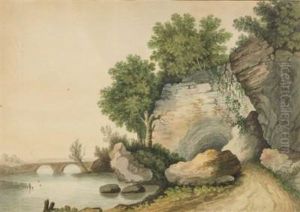Maria Pia Di Savoia Paintings
Maria Pia Di Savoia was born on October 16, 1847, in Turin, Italy, into the royal House of Savoy. She was the daughter of King Victor Emmanuel II of Italy and his wife, Adelaide of Austria. Growing up in the royal court of the newly unified Italy, Maria Pia was part of a family that played a significant role in the political and social transformations of Italy during the 19th century. Her father, Victor Emmanuel II, was a key figure in the Italian unification process, known as the Risorgimento, which led to the establishment of Italy as a united kingdom in 1861.
In 1862, at the age of 15, Maria Pia married King Luís I of Portugal, becoming Queen Consort of Portugal. This marriage was part of the broader political alliances of the time, aimed at strengthening ties between Italy and Portugal. As Queen Consort, Maria Pia was known for her strong personality, social work, and involvement in charitable activities. She significantly influenced the Portuguese royal court and was actively involved in issues related to health care and social services, establishing several charitable institutions and hospitals.
Maria Pia's tenure as Queen Consort saw her dedication to the arts and culture, promoting various artistic initiatives and patronizing artists. Despite her active role in the public life of Portugal, her personal life was marked by tragedies, including the early deaths of two of her children. Her relationship with King Luís I was complex, characterized by mutual respect but also estranged due to their different personalities and interests.
After the death of her husband in 1889, Maria Pia's influence in the Portuguese court diminished, especially as her son, King Carlos I of Portugal, took the throne. The final years of her life were overshadowed by the political turmoil and social unrest in Portugal, culminating in the assassination of her son King Carlos I and her grandson Luís Filipe in 1908. This event marked the beginning of the end for the Portuguese monarchy, which was eventually overthrown in 1910.
Maria Pia Di Savoia died on July 5, 1911, in Stupinigi, Italy, a year after the establishment of the Portuguese Republic. Despite the challenges and controversies that marked her life, she is remembered in both Italy and Portugal for her dedication to social causes and her role as a patron of the arts. Her legacy continues to be a subject of interest for historians and scholars studying the complex dynamics of European royal families and their influence on the social and political landscapes of their countries.
